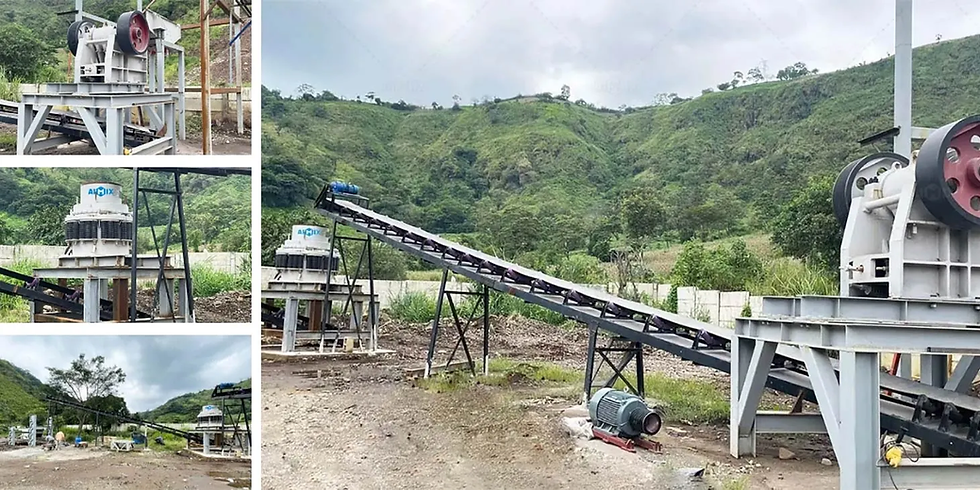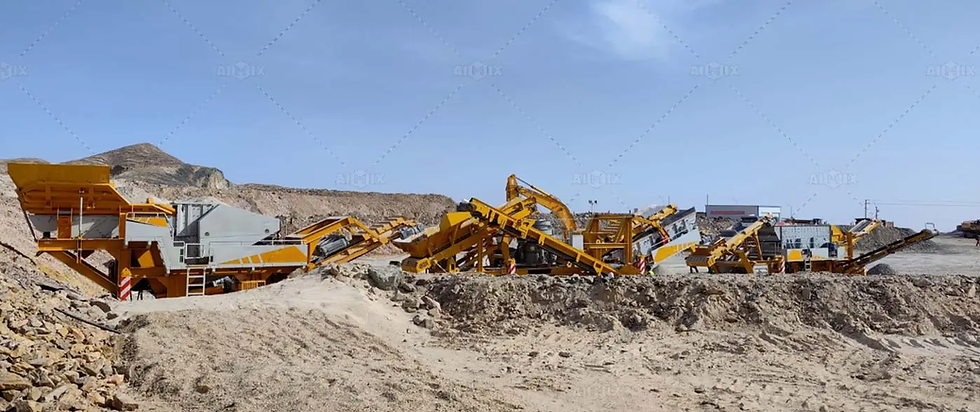On-the-Go Solutions: How Mobile Crushing Plants are Shaping the Future of Urban Development
- aimixgroup china
- 7 hours ago
- 3 min read
Let’s be unequivocally clear: the traditional model of urban construction is broken. It’s a creaking, antiquated system that hemorrhages money, time, and environmental capital with every new project. The practice of quarrying aggregates miles from a city, loading them onto a convoy of diesel-guzzling trucks, and inching them through congested streets to a construction site is not just inefficient—it’s an act of profound architectural folly. We are literally building the future of our cities with a methodology from the past. But a revolution is rolling, quite literally, onto job sites worldwide. Mobile crushing plants are not merely an alternative piece of equipment; they are the vanguard of a smarter, more sustainable, and fiercely efficient era of urban development. They represent a fundamental paradigm shift, and to ignore their potential is to be complicit in the stagnation of our industry.
The Urban Imperative: Why Static Plants are an Architectural Relic
The argument against the status quo is overwhelming. Consider the sheer absurdity of transporting millions of tonnes of rock across a metropolitan landscape. The financial cost is staggering, with fuel, vehicle maintenance, and driver wages constituting a massive, hidden tax on every project. The environmental cost is even more damning; this endless procession of trucks is a primary contributor to urban air pollution and carbon emissions. But the most egregious cost is temporal. Traffic delays, breakdowns, and logistical nightmares create unpredictable schedules, turning project timelines into mere suggestions. The static, remote quarry and its attendant supply chain represent a brittle, inflexible system that is fundamentally incompatible with the dynamic, space-constrained, and environmentally conscious demands of 21st-century city-building. This model is a relic. Its continued dominance is an indictment of our industry’s resistance to innovation.

The Mobile Revolution: A Technical Masterpiece of Efficiency
Enter the mobile crushing plant—a masterpiece of self-contained engineering that brings the mountain to Mohammed. These compact, tracked powerhouses can be transported to a site, set up in a matter of hours, and begin processing raw material directly where it is needed. The efficiency gains are nothing short of revolutionary. By eliminating the transport leg of the supply chain, we immediately slash a massive portion of the project’s cost and carbon footprint. The logistics become breathtakingly simple. The track crusher plant is fed; it produces precisely graded aggregate; and the material is conveyed directly to the point of use, sometimes mere meters away.
This is not a marginal improvement. It is a quantum leap in operational intelligence. The ability to produce different aggregate sizes on demand—from base course to fine sands—provides unparalleled flexibility. Project managers gain absolute control over their material supply, insulating them from price volatility and delivery delays from external suppliers. The mobile plant transforms the material supply from a chaotic external variable into a managed, on-site process. This is the very definition of efficiency.
Transforming Urban Waste into Architectural Assets
Perhaps the most compelling aspect of mobile crushing is its ability to close the loop on urban material flows. Cities are constantly generating construction and demolition (C&D) waste, a stream of concrete, asphalt, and brick that typically ends up in already overburdened landfills. This is a catastrophic waste of resources. A mobile crusher turns this problem into a solution. It can be positioned at a demolition site to process rubble directly into high-quality recycled aggregate.
This material can then be reused immediately for new foundations, road bases, or backfill on the same site. This process, known as urban mining, is the cornerstone of the circular economy. It transforms waste into a valuable asset, reduces landfill dependence, and preserves natural resources. We are no longer just building; we are curating the city’s existing material stock. This is a profound shift from a linear, extractive model to a regenerative, intelligent one. It’s not just crushing rock; it’s crushing outdated thinking.

The Inevitable Future: Building Smarter, Cleaner, and Faster
The adoption of mobile crushing technology is no longer a matter of choice for forward-thinking urban developers; it is an imperative. The economic, environmental, and scheduling advantages are too significant to ignore. This technology is the key to building denser, greener, and more resilient cities. It reduces traffic congestion, cleans the air, and conserves natural landscapes.
The future belongs to those who build smarter. It belongs to the developers and contractors who see a demolition site not as a problem of waste disposal, but as a source of raw materials. It belongs to those who value precision, efficiency, and sustainability over tradition. Mobile stone crusher plant is more than machinery; they are the embodiment of a new philosophy. They are the on-the-go solution for building a future we can be proud of. The question is not if this technology will become standard, but how quickly you will embrace it before you are left behind.


Comments